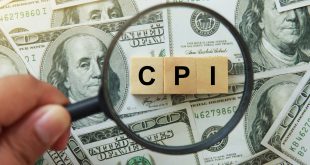Why Is the Dollar Tanking Despite a Stellar Jobs Report?
The US Dollar is reeling, defying logic after a robust April jobs report that showcased stronger-than-expected job growth, steady unemployment, and persistent wage gains. Instead of soaring, the Dollar Index slumped to 99.88, shedding 0.37 points from its prior close. With the Federal Reserve’s focus on inflation and tariff impacts yet to materialize, markets are questioning the sustainability of this labor market strength. Here’s why the Dollar is faltering, what’s driving the disconnect, and what’s next for the Greenback.
Jobs Data Shines, but Dollar Dims
April’s Nonfarm Payrolls report added 177,000 jobs, blowing past forecasts of 130,000, though slightly below March’s revised 185,000. The unemployment rate held steady at 4.2%, aligning with expectations, while average hourly earnings rose 0.2% monthly—below the anticipated 0.3%—and 3.8% annually, missing the 3.9% forecast. This robust data should bolster the Dollar by signaling a healthy economy, yet the Dollar Index slid from a daily high of 100.33 to a low of 99.40. The culprit? Market skepticism about whether this jobs surge can endure amid looming tariff pressures.
Fed’s Inflation Focus Overshadows Jobs Strength
The Federal Reserve, led by Chair Jerome Powell, is prioritizing inflation over labor market gains, especially after the “Liberation Day” tariff announcements on April 2. The jobs data, collected post-tariffs, doesn’t yet reflect their economic fallout, leaving investors wary. Strong job growth typically supports higher interest rates, which should lift the Dollar. However, markets expect the Fed to maintain rates at 4.25%-4.50% through summer, as inflation risks tied to tariffs take center stage. This focus has triggered heavy Dollar selling, with traders awaiting further data to confirm labor market resilience.
Tariffs Cast a Long Shadow
The unprecedented tariffs introduced in April are a wildcard. While the jobs report paints a rosy picture, it predates the full impact of these trade policies, which could raise costs and dampen growth. Investors fear that passing tariff costs to consumers may erode purchasing power, slowing the economy and undermining the labor market’s gains. This uncertainty has cooled Dollar bullishness, as markets demand evidence that job growth can withstand trade disruptions before betting on sustained Dollar strength.
What Lies Ahead for the Dollar
The Dollar’s slide reflects a market caught between optimism and caution. Upcoming data, including PMI and consumer confidence, will clarify whether April’s jobs strength is a fluke or a trend. If trade policies spark inflation without derailing growth, the Fed may hold rates steady, potentially reviving the Dollar. But persistent tariff fears could keep the Greenback under pressure. For now, the Dollar’s dip is a warning: even blockbuster data can’t outshine the uncertainty of a trade-war-torn economy. Traders should brace for volatility as the tariff saga unfolds.

 Noor Trends News, Technical Analysis, Educational Tools and Recommendations
Noor Trends News, Technical Analysis, Educational Tools and Recommendations




